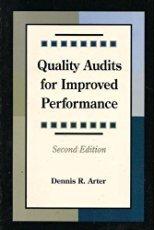





Requirement 3. Which job (Job 500 or Job 501) uses more of the company's resources? Explain. of the company's resources machine hours than the other job. The accounting system should show that one job actually the other Requirement 4. Compute the total amount of overhead alocated to each job if the company uses its current plantwide overhead rate. Job 500 Job 501 Total direct labor hours x Plantwide allocation rate Overhead allocation Choose from any list or enter any number in the input fields and then continue to the next question. Requirement 5. Compute the total amount of overhead allocated to each job if the company uses departmental overhead rates. Job 500 Job 501 Overhead allocation - Machining Department Overhead allocation - Assembly Department Total overhead allocation Requirement 6. Do both of the allocation systems accurately reflect the resources each job used? Explain. The single plantwide overhead rate assigned of overhead to both jobs. The departmental rates assign 500 due to the used. This seems Requirement 7. Compute the total manufacturing cost and sales price of each job using the company's current plantwide overhead rato. (Round amounts to the Choose from any lat or enter any number in the input fields and then continue to the next question V to Job 501 than Job Student Course Evaluations Machining Assembly Requirement 3. Which job (Job 500 or Job 501) uses more of the company's resources? Explain. of the company's resources Job 500 uses more je hours than the other job. The accounting system should show that on Job 501 uses more the other Requirements. Compute the total amount of overhead allocated to each job if the company uses its cu Job 500 Job 501 e and comment on the results you obtained in Requirements 7 and 8. rate allocation method, Robillard believes that costing method, Robillard realizes that both jobs are equally profitable or enter any number in the input fields and ti Job 500 is profitable but Job 501 shows a loss Job 501 is profitable but Job 500 shows a Ines X Data Table Machining Assembly Department Department Job 500 ... 10 MH 12 DL hours 5 DL hours Job 501 ... 20 MH 12 DL hours 5 DL hours Both Jobs 500 and 501 used $1,800 of direct materials. Wages and benefits total $30 per direct labor hour. Walters Products prices its products at 110% of total manufacturing costs. Print Done Walters Products manufactures its products in two separate departments: Machining and Assembly. Total manufacturing overhead costs for the year are budgeted at $1,100,000. Of this amount, the Machining Department incurs $680,000 (primarily for machine operation and depreciation) while the Assembly Department incurs $420,000. The company estimates that it will incur 10,000 machine hours (all in the Machining Department) and 22,000 direct labor hours (8,000 in the Machining Department and 14,000 in the Assembly Department) during the year. Walters Products currently uses a plantwide overhead rate based on direct labor hours to allocate overhead. However, the company is considering refining its overhead allocation system by using departmental overhead rates. The Machining Department would allocate its overhead using machine hours (MH), but the Assembly Department would allocate its overhead using direct labor (DL) hours. The following chart shows the machine hours (MH) and direct labor (DL) hours incurred by Jobs 500 and 501 in each production department: :: (Click the icon to view the additional information.) Read the requirements. Requirement 1. Compute the company's current plantwide overhead rate. (Round your answer to the nearest dollar.) Begin by determining the formula, then compute the rate. Total manufacturing overhead / Total direct labor hours Plantwide overhead rate $ 1,100,000 / 22,000 $ 50 per DL hour Requirement 2. Compute refined departmental overhead rates. Determining the formula, then compute the rates. (Round your answers to the nearest dollar.) = Departmental overhead rate












